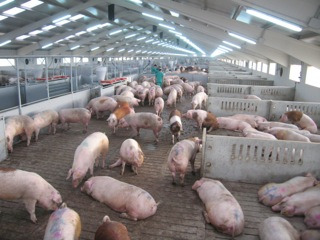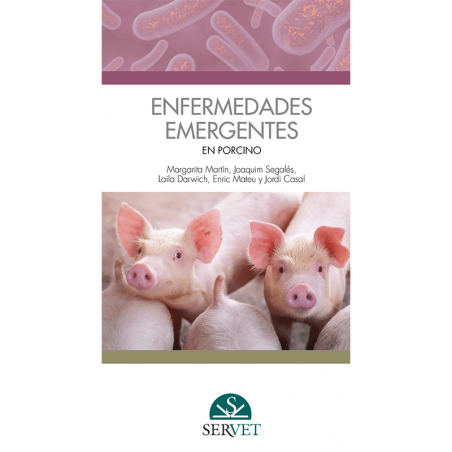The relative impact of digestive problems on pig production is steadily increasing. Weaning is a critical time for the digestive physiology of the piglet, because a number of well-known predisposing factors that pose great stress for a still very immature animal happen at the same time. They include, but are not limited to: the loss of their dam and stop of milk supply; change of facilities (sometimes involving transport), mixing, new social order, etc. A key factor is the change to a solid diet, which must be very specific and fit the digestive physiology of the piglet.
Many of today's industrial farms are weaning above 28 piglets sow/year, which are often housed in facilities designed long ago, when the number of piglets weaned per sow was significantly lower. This leads to overstocking and worse access to feeders and drinkers, factors also contributing to digestive alterations. Also, these piglets come from increasingly lean and hyperprolific sows that produce big litters whose piglets have received less milk than would be desirable.

Many infectious agents can contribute to the aetiology of diarrhoea at weaning. At this stage, changes in the digestive physiology of the piglet make it possible for both agents affecting the small and large intestine to show their pathogenic effect. The main agents involved are:
• Escherichia coli
• Salmonella
• Spirochete Diarrhoea: Brachyspira pilosicoli
• Dysentery: Brachyspira hyodysenteriae
• Proliferative Enteropathy: Lawsonia intracellularis
• Clostridium perfringens type A
• Rotavirus
• Porcine Epidemic Diarrhoea virus
• Cryptosporidia
• Nematodes: Trichuris suis
• Other: Campylobacter coli, Yersinia enterocolitica
Many of today’s farms have a very high health status and are free of pathogens that could affect weaned piglets. In these farms, postweaning diarrhoea is often caused by intestinal dysbiosis, which has been defined as "an unstable state with quantitative and qualitative changes in the intestinal flora, its metabolic activity or local distribution", or also as a "state in which microbiota produces harmful effects through qualitative and / or quantitative changes in its own intestinal microbiota, changes in its metabolic activities or changes in its local distribution.”


High health and high production farm

Gestation barn with automatic feeders in a high health farm
In most of these cases (farms with a high health status and high productivity) the isolated agent at the laboratory is Escherichia coli (with more or less virulence factors), Clostridium perfringens or both. In our opinion, these isolates are the "tip of the iceberg": these pathogenic E. coli or Cl. perfringens are also found in the intestine of healthy piglets, so what we really have is a qualitative and quantitative change in the microbiota, that is to say, a dysbiosis.
The classic solution after isolation and antibiogram, where appropriate, is to apply antibiotic treatments, which in many cases do not solve the problem or even make it worse. In addition, the companies owning these farms are asking their veterinarians to reduce the use of antibiotics as much as possible because of legislation pressure and demand from consumers and distribution companies.
We consider that in these circumstances it is especially important to address the problem of post-weaning diarrhoea from a broader point of view. We need to understand what is happening and what the circumstances are that cause bacteria that are also present in the microbiota of healthy piglets to multiply in such a way that they are capable of causing diarrhoea.
The study of the human intestinal microbiota is a field that has been growing enormously in the last years due to its influence in health, and particularly digestive health. Nowadays, there are molecular biology techniques and tools that allow studies that were impossible not too long ago because of their complexity and cost.
Use of these tools in veterinary medicine makes it possible to characterize the digestive microbiota and the dysbiosis that causes diarrhoea. Likewise, it is possible to determine the response of this microbiota to any factor that may influence it. Studying the response to dietary or management modifications, immunization, antibiotic treatments, probiotics, prebiotics or phytobiotics administration, etc. will allow us to correct the dysbiosis at some point, if necessary. More importantly, it allows us to establish the cause of the effectiveness or ineffectiveness of any given control measure that is intended to be applied in order to prevent the problem in future batches of piglets.





